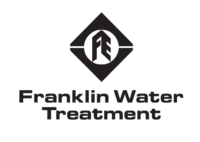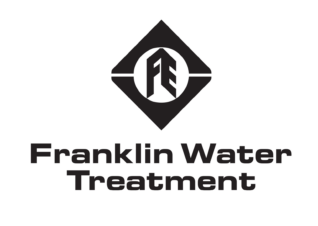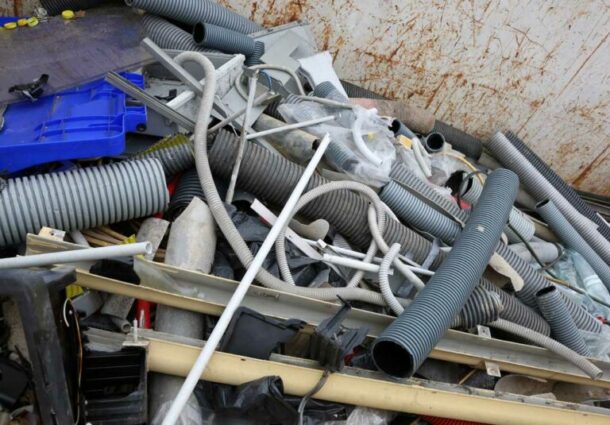Franklin Electric Co., Inc. (NASDAQ: FELE) announced that its wholly owned subsidiary, Franklin Water Treatment, LLC, has acquired the assets of Action Manufacturing & Supply, Inc., a manufacturer and wholesale distributor of residential water conditioning, filtration, and indoor/outdoor aeration systems since 1980 with operations in Florida and North Carolina. The operating results of the acquired Read more
Industry News

 Franklin Electric Co., Inc. (NASDAQ: FELE) announced that its wholly owned subsidiary, Franklin Water Treatment, LLC, has acquired the assets of Action Manufacturing & Supply, Inc., a manufacturer and wholesale distributor of residential water conditioning, filtration, and indoor/outdoor aeration systems since 1980 with operations in Florida and North Carolina. The operating results of the acquired business will be reported in the company’s Water Systems business segment.
Franklin Electric Co., Inc. (NASDAQ: FELE) announced that its wholly owned subsidiary, Franklin Water Treatment, LLC, has acquired the assets of Action Manufacturing & Supply, Inc., a manufacturer and wholesale distributor of residential water conditioning, filtration, and indoor/outdoor aeration systems since 1980 with operations in Florida and North Carolina. The operating results of the acquired business will be reported in the company’s Water Systems business segment.
Don Line, President of Franklin Water Treatment commented: “We are excited to incorporate the business of Action Manufacturing & Supply into our existing business as we continue to strengthen and expand our channels and products in key geographic areas for water treatment. Action’s commitment to quality and reputation for service excellence aligns with Franklin’s customer-driven approach to our businesses.”
Franklin Water Treatment, LLC provides products, services, and system solutions for residential, commercial, and industrial point of use and point of entry water treatment products, in a wide variety of markets and applications.

Budderfly, the premier sustainability partner for businesses with repeatable footprints, today announced a strategic partnership with Fujitsu General America, to develop and deploy high-efficiency energy technologies for mid-market businesses across the United States. Under the terms of the agreement, Budderfly will leverage Fujitsu’s AIRSTAGE Variable Refrigerant Flow (VRF) systems as the core component for its Read more
Budderfly, the premier sustainability partner for businesses with repeatable footprints, today announced a strategic partnership with Fujitsu General America, to develop and deploy high-efficiency energy technologies for mid-market businesses across the United States.
Under the terms of the agreement, Budderfly will leverage Fujitsu’s AIRSTAGE Variable Refrigerant Flow (VRF) systems as the core component for its Ultra High Performance (UHP) heating, ventilation, and air conditioning (HVAC) architecture. The state-of-the-art heat pump and ventilator-separated system is the most advanced HVAC solution specifically designed for the approximately 94 percent of U.S. commercial buildings under 50,000 square feet.

The UHP HVAC system is an energy-efficient solution to replace conventional and outdated Roof Top Unit (RTU) HVAC systems, reducing a building’s energy consumption by as much as 70 percent. Fujitsu expects to deliver a large number of AIRSTAGE VRF Systems to Budderfly in the coming year, scaling year-over-year to service Budderfly’s robust customer pipeline.
In addition, Budderfly and FGAI will collaborate to innovate further and develop on-site, cloud-based sensing and control technologies that will unlock end-to-end digital transformation for small- and medium-sized businesses.
“As much as 50 percent of the energy businesses consume is attributed to HVAC systems. As electricity prices and sustainability standards rise, we’re excited to partner with Fujitsu General to help businesses reimagine their energy profile and better their bottom line,” said Al Subbloie, chief executive officer and founder of Budderfly. “Fujitsu’s AIRSTAGE Systems are designed to meet the wide range of energy needs for commercial buildings, making them the ideal solution to seamlessly integrate into our end-to-end energy management offering.”
Budderfly’s innovative UHP HVAC system decouples the conventional RTU HVAC into two components: an energy recovery ventilator and a variable refrigerant flow system. The energy recovery ventilator brings in outside air while also recovering energy from exhaust air. Fujitsu’s AIRSTAGE system cools or heats the ventilated air based on the needs of the space and boosts overall air quality by improving humidity control, directing airflow, increasing oxygen levels, and lowering total volatile organic compounds (TVOCs). This provides a fully-electric system that eliminates the need for natural gas and is half the size of a traditional HVAC rooftop unit.
“Our partners at Budderfly share in our core mission of unlocking a better, more sustainable future,” said Tomokazu Hosoi, president of Fujitsu General America. “As pressures mount for buildings to reduce their carbon footprint, we’re combining our energy-efficient technology expertise and Budderfly’s innovative Energy as a Service business model to help accelerate the sustainability transformation for commercial buildings across the U.S.”
To learn more about how Budderfly’s UHP HVAC System transforms business operations, visit: https://case-studies.budderfly.com/dunkin-uhp-case-study
A Comprehensive Line Includes Large Diameter Pipes and Fittings Jones Stephens, an industry leader in the manufacture and distribution of plumbing products, introduces its PEX-A Piping System – a wide range of PEX-A pipe and F1960 expansion and F1807/F2159 crimp fittings, including large diameter. https://youtu.be/gV-JPFMfWpI?si=_bWfPOXvyG-SQUNz The benefits of PEX-A piping are significant. Ideal for all Read more
A Comprehensive Line Includes Large Diameter Pipes and Fittings
Jones Stephens, an industry leader in the manufacture and distribution of plumbing products, introduces its PEX-A Piping System – a wide range of PEX-A pipe and F1960 expansion and F1807/F2159 crimp fittings, including large diameter.
The benefits of PEX-A piping are significant. Ideal for all new construction and repair jobs, PEX-A pipe is corrosion resistant, making it more durable than corrosion-prone copper pipes. It has a superior crosslinking pattern, making it highly flexible. While copper and other systems can burst in freezing temperatures, PEX-A piping expands in the cold and frigid air, thus making it resistant to damage. PEX-A piping creates less kinking, so installation is simple and quick. It absorbs sound, so it provides a quiet system, and its high thermal-resistant property keeps hot water hotter and longer, saving valuable energy. Additionally, Jones Stephens’ cold expansion fittings, along with its brass and plastic crimp fittings, provide a dependable, leak-free, and secure plumbing connection. And the comprehensive offering even includes PEX-A piping for potable water and oxygen barrier applications.
Jones Stephens’ product line includes the following:
- PEX-A pipe, Potable water, and Oxygen Barrier
- ½” to 2”
- Red, Blue, and Natural colored
- Coils and Straight Lengths
- F1960 Expansion Fittings
- ½” to 2”
- Brass and Poly
- F1807/F2159 Crimp Fittings
- ½” to 1”
- Brass and Poly

Meeting all industry standards, certifications, and compliance, PEX-A Piping Systems by Jones Stephens are now in stock and shipping.
For more information, visit Jones Stephen PEX-A Plumbing System.

Industry Report Examines Plastic Pipe Materials and Health Impacts The latest report from Safe Piping Matters covers upcoming research showing commonly used plastic pipe materials can release significant amounts of microplastics and nanoplastics into plumbing systems. It also provides a look at current studies examining how these and other tiny plastic particles affect human health Read more
Industry Report Examines Plastic Pipe Materials and Health Impacts
The latest report from Safe Piping Matters covers upcoming research showing commonly used plastic pipe materials can release significant amounts of microplastics and nanoplastics into plumbing systems. It also provides a look at current studies examining how these and other tiny plastic particles affect human health, including impacts on the gut, lungs, brain, and reproductive organs, as well as increasing risks from related toxins and pathogens.

“The explosion of plastic pollution around the world continues to contaminate drinking water, food, and air with microplastics,” said Paul Hagar, Executive Director of Safe Piping Matters. “Our report shows why the plumbing industry needs to study the ways in which plastic pipe materials contribute to microplastic contamination.”
The report summarizes a study from Polish researchers who analyzed materials taken from water-transmission systems and found that plastic materials degrade “relatively quickly” as they age. Scans of the interior pipe surfaces showed peeling and flaking that released plastic particles into the water, adding to humans’ already significant exposure to ingested microplastics.
Plastic Pipes Microplastics and Health Impacts Report
The report also looks at issues such as chemical leaching in addition to shedding of micro- and nano- particles from common plastic pipe materials PVC (polyvinyl chloride), PE (polyethylene), PEX (cross-linked polyethylene), and CPVC (chlorinated polyvinyl chloride). It then reviews effects that medical studies have begun documenting on humans and/or lab animals, describing associations with cancer, cell death, tissue inflammation and damage, disruption of nervous function, reduced fertility, and other impacts.
“Architects, engineers, and contractors who care about the health and safety of building occupants should consider these issues when selecting piping materials,” says Hagar. “Emerging research does not support industry claims of rigorous testing standards and product safety.”

The premier business training and coaching provider for the HVAC industry introduces its Emerging Business Academy program to guide motivated small business owners toward sustainable growth and increased profitability in 2024 Business Development Resources (BDR), the training and business coaching authority for home services industry professionals, introduces its Emerging Business Academy, a streamlined version of its Read more
The premier business training and coaching provider for the HVAC industry introduces its Emerging Business Academy program to guide motivated small business owners toward sustainable growth and increased profitability in 2024
Business Development Resources (BDR), the training and business coaching authority for home services industry professionals, introduces its Emerging Business Academy, a streamlined version of its flagship coaching program tailored to the unique needs of growing small businesses.

Business Development Resources (BDR) introduces its Emerging Business Academy, a streamlined version of its flagship coaching program that guides motivated small business owners to put specific foundational systems and processes into place to reach revenues of $1 million and beyond.
BDR’s Emerging Business Academy, designed for businesses with four people or fewer, guides motivated owners to put specific foundational systems and processes into place to reach revenues of $1 million and beyond.
“With our Emerging Business Academy, the goal is to introduce small business owners to the process of structuring their business to grow and be successful long-term,” said Kim Archer, President of BDR. “For over 20 years, our Profit Coach program has provided insights to help owners shift from a tactical role to a strategic one. We’re taking that same proven system and customizing it specifically for smaller businesses looking to take their first steps in driving profit and growth.”
Emerging Business Academy’s year-long series of 48 weekly sessions starts on Jan. 17. Each 60-minute session features 30-40 minutes of instruction followed by 20-30 minutes of discussion and follow-up. As the sessions progress, participants discover BDR’s core best practices and work with their coach to construct a business plan supporting increased profitability and growth to scale.
Participants in Emerging Business Academy build a foundation for their company to succeed and grow through insights of million-dollar business owners, focusing on actionable steps in areas such as:
- Proper pricing and job-costing
- Sales and estimation practices
- Building effective marketing programs
- The power of accessories and maintenance agreements
- Timely billing and collections
- Successfully managing and leveraging your team
- Delegation and performance accountability
Along with the weekly live sessions, the Emerging Business Academy also includes access to BDR’s industry-leading training program, with the ability to choose four different 3-Hour Power-Up courses throughout the year.
“BDR has worked with thousands of contractors over the last 25 years, and our Profit Coach program has helped business owners across the country go from the $1 million wall to $50 million and beyond,” said Bruce Wiseman, CEO and founder of BDR. “With BDR’s Emerging Business Academy, we now have the full range of resources available to support contractors at every level in building a successful and profitable home service business.”
Find out more about BDR’s Emerging Business Academy or register at https://www.bdrco.com/emerging-business-academy/.
